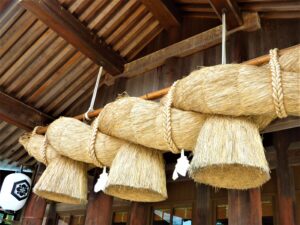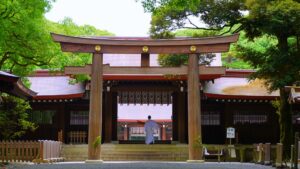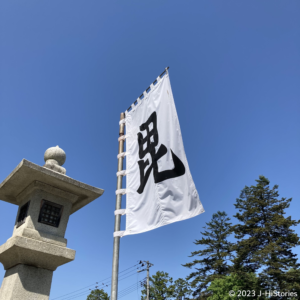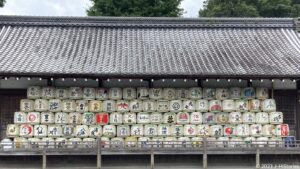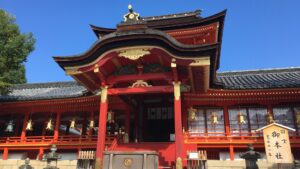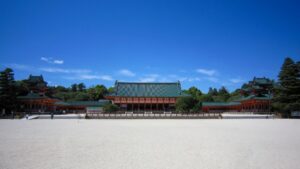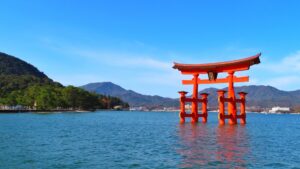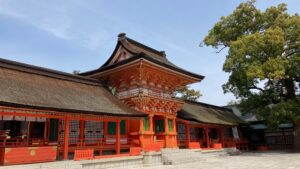Izumo Taisha Shrine: Mystical Secrets of Izumo's Spiritual Power
Izumo holds a special place in Japanese history starting mythological ancient times. Several reasons: The largest Shimenawa, sacred straw ropes, in Japan, the largest Main Shrine in ancient times, the Kamiarisai Festival in October of the lunar calendar, where deities from across Japan gather in Izumo, the largest Bronze bell-shaped vessels and Bronze Swords in […]
Izumo Taisha Shrine: The Heart of the Japanese People at Kamiari-sai Festival
The Kamiari-sai is an annual festival held at Izumo Taisha Shrine, taking place in October according to the lunar calendar. In the year 2023, it’s scheduled from November 22nd to the 29th. The festival is staged to welcome the deities from the nation, and it commences at Inasa-Hama shore, which is situated approximately a 20-minute […]
Meiji Jingu Shrine: An Amazing Green Forest to Commemorate the Virtues of Emperor Meiji
Meiji Jingu Shrine is located in the center of Tokyo to enshrine the spirit of Emperor Meiji and Empress Shoken. It has a variety of wild animals, bugs, butterflies, fungi, 234 kinds of trees, 352 kinds of plants, and more than 100 kinds of birds in the forest which is blessed with a breath of […]
The God of War, Kenshin, and the Muromachi Shogunate Revival
Uesugi Kenshin (1530-1578, 上杉謙信) was a fervent believer in the god of war, Bishamonten (毘沙門天), using one of the letters of '毘' as an emblem on his own flag, and fighting under the banner of 'Bi'. During his lifetime, he lost only twice out of 71 battles, making him a true military god. During the […]
Unveiling the Secrets of Matsunoo Taisha, the Best Sake Brewery Shrine
Matsunoo Taisha Shrine stands as one of Japan’s revered three sake shrines, alongside Omiwa Jinja, and Umemiya Jinja, all venerating the sake deity worshipped by sake brewers. Upon crossing the Romon Gate, you gaze at the Shinyoko on the left, a warehouse for portable shrines. Here, a mesmerizing array of a variety of Komodaru straw […]
Why did So Many Emperors, Court Nobles, and Samurai visit the Iwashimizu Hachimangu Shrine?
In the year 860, the Iwashimizu Hachimangu Shrine was established by an oracle who voiced a fervent wish to stand in proximity to the Imperial palace, safeguarding the nation. Thus, the venerated Hachiman deity was enshrined as a national guardian deity in Kyoto along the head shrine of Hachiman Okami, Usa Jingu Shrine in Kyushu. […]
Heian Jingu Shrine: When was Kyoto the capital of Japan?
Heian Jingu Shrine enshrines the spirits of the first and last emperors who governed the nation in Kyoto, the old capital of Japan, for over 1100 years, spanning from 794 to 1868. Passing through the vermilion Otorii gate, the Otenmon gate leads you into the interior of the Heian Jingu Shrine. The bright vermillion color […]
Itsukushima Shrine, Itsukushima Detiy smiled on Samurai, Mori Motonari
Itsukushima Shrine - UNESCO World Cultural Heritage site - seemingly floating on the water, enchants visitors with the atmosphere of its spiritual power in the vermillion-lacquered shrine. It’s located on Miyajima Island in Hiroshima prefecture, traveling just 10 minutes by ferry from the port. Miyajima Island has been adored as “the island where deity resides” […]
Aoi Matsuri Festival, the heart of Kyoto’s graceful festival at two Kamo Shrines
Aoi Matsuri is one of Kyoto's three most famous festivals (Aoi, Gion, and Jidai), held at Kamigamo and Shimogamo Shrines. It is also one of the three major Chokusai festivals (Aoi, Iwashimizu, and Kasugasai) where an imperial envoy delivers an invocation on behalf of the emperor for the safety of the nation and its people. The main […]
The History of Hachiman Deity Worshipped at Usa Jingu Shrine, Protecting Japan and Samurai
Usa Jingu is the head shrine of approximately 460,000 Hachimangu shrines, out of a total of 110,000 shrines in Japan. This makes it the largest number in Japan. The three major Hachimangu shrines are Usa Jingu in Kyushu, Hakozakigu in Kyushu, and Iwashimizu Hachimangu in Kyoto. The deity worshipped at Usa Jingu Shrine, Hachiman Omikami, […]

